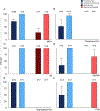Rupture risk and outcomes of giant aneurysms in pediatric patients: a multi-institutional case series and systematic review
- PMID: 38157537
- PMCID: PMC10932817
- DOI: 10.3171/2023.10.PEDS23296
Rupture risk and outcomes of giant aneurysms in pediatric patients: a multi-institutional case series and systematic review
Abstract
Objective: Giant aneurysms in pediatric patients are vascular lesions that can cause significant neurological morbidity and mortality. Their rarity has precluded large cohort studies to inform their management. The objective of this study was to understand the clinical course and outcomes of giant aneurysms in pediatric patients.
Methods: The authors performed a multi-institutional cohort study of cases from Boston Children's Hospital and Barrow Neurological Institute, as well as a systematic review and pooled cohort analysis of previously reported cases using descriptive statistics and multivariate regression modeling.
Results: Fifteen patients were included in the multi-institutional cohort, and an additional 88 patients were included from 14 series, yielding 103 patients within the pooled cohort. Among the pooled cohort, the most common aneurysm locations were in the middle cerebral artery (36%), internal carotid artery (27%), vertebral artery (11%), and vertebrobasilar junction (8%). Within 69 cases containing radiographic data in the analysis, 38% of aneurysms were saccular. Twenty-eight cases presented with aneurysm rupture (28%), including 0% of cavernous carotid aneurysms, 26% of other anterior circulation aneurysms, and 44% of posterior circulation aneurysms (p = 0.003). In multivariate analysis, posterior circulation location (OR 2.66, 95% CI 1.03-6.86) and younger age (OR 0.90 per year, 95% CI 0.81-1.00) were associated with aneurysm rupture presentation. Most cases were treated (97%) rather than observed (3%). The mortality rate was 3% for unruptured aneurysms and 18% for ruptured aneurysms. A favorable neurological outcome occurred in 80% of unruptured aneurysm cases and 54% of ruptured cases. In multivariate analysis, unruptured aneurysm presentation (OR 3.74, 95% CI 1.24-11.29) and endovascular treatment modality (OR 5.05, 95% CI 1.56-16.29) were associated with a favorable outcome.
Conclusions: Giant aneurysms are rare entities in pediatric patients that are unlikely to be discovered incidentally and usually merit treatment. Most patients survive with good neurological outcome, even in ruptured aneurysm cases. These data reveal that posterior circulation location and younger age are risk factors that correlate with an increased risk of aneurysm rupture.
Keywords: case series; giant aneurysm; rupture; systematic review; vascular disorders.
Figures




References
-
- Xu R, Xie ME, Yang W, et al. Epidemiology and outcomes of pediatric intracranial aneurysms: comparison with an adult population in a 30-year, prospective database. J Neurosurg Pediatr. 2021; 28(6): 685–694. - PubMed
-
- Liang JT, Huo LR, Bao YH, Zhang HQ, Wang ZY, Ling F. Intracranial aneurysms in adolescents. Childs Nerv Syst. 2011; 27(7): 1101–1107. - PubMed
-
- Huang J, McGirt MJ, Gailloud P, Tamargo RJ. Intracranial aneurysms in the pediatric population: case series and literature review. Surg Neurol. 2005; 63(5): 424–433. - PubMed
-
- Kakarla UK, Beres EJ, Ponce FA, et al. Microsurgical treatment of pediatric intracranial aneurysms: long-term angiographic and clinical outcomes. Neurosurgery. 2010; 67(2): 237–250. - PubMed
Publication types
MeSH terms
Grants and funding
LinkOut - more resources
Full Text Sources

